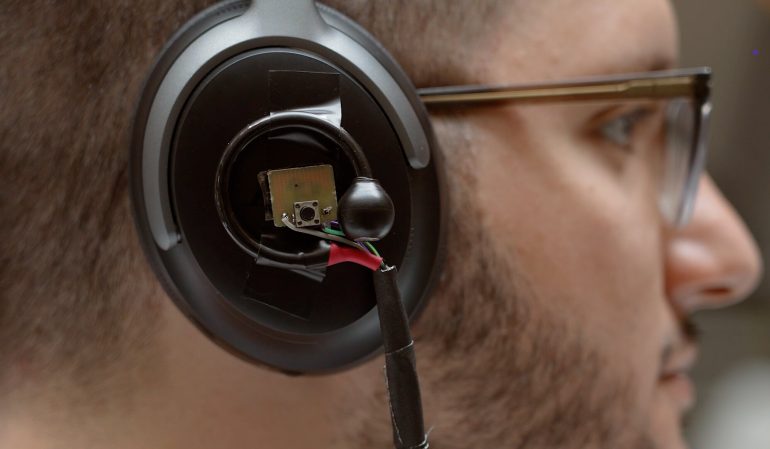- University of Washington develops Target Speech Hearing (TSH) AI system for headphones.
- TSH allows users to focus on a single speaker in noisy environments.
- Users enroll speakers by looking at them, enabling real-time voice isolation.
- TSH significantly enhances clarity of enrolled speaker’s voice over background noise.
- Future plans include extending TSH technology to earbuds and hearing aids.
Main AI News:
Cutting-edge technology in noise-canceling headphones has long aimed at creating a sanctuary of silence amidst the chaos of everyday life. However, the challenge persists in discerning desired sounds from the cacophony of surroundings. While some advancements have been made, such as Apple’s AirPods Pro adapting sound levels based on user activity, the control over specific auditory inputs remains limited.
Enter the innovative solution developed by a team at the University of Washington—Target Speech Hearing (TSH). This groundbreaking artificial intelligence system empowers headphone users to focus on a single speaker in a crowd with unparalleled precision. Presented at the ACM CHI Conference on Human Factors in Computing Systems, the TSH system promises a transformative listening experience.
By simply directing their gaze towards the desired speaker for a brief moment, users can enroll them into the system’s database. Once enrolled, TSH employs advanced algorithms to isolate and amplify the speaker’s voice in real-time, effectively drowning out all other auditory distractions. This remarkable feat of technology ensures crystal-clear communication even in the most bustling environments.
“We’ve shifted the paradigm of AI from passive information retrieval to active auditory perception modulation,” explains Shyam Gollakota, senior author of the study and a distinguished professor at UW’s Paul G. Allen School of Computer Science & Engineering. “With TSH, users can now exercise precise control over their auditory environment, enhancing their listening experience in any situation.”
The implementation of TSH is elegantly simple—users equipped with standard headphones fitted with microphones need only tap a button while facing the desired speaker. The system then captures the speaker’s vocal patterns, effectively tailoring the listening experience to individual preferences. As users navigate noisy surroundings, TSH seamlessly adapts, ensuring uninterrupted clarity.
In rigorous testing involving 21 subjects, the superiority of TSH became evident, with participants consistently rating the clarity of the enrolled speaker’s voice significantly higher than unfiltered audio. This success underscores the potential of TSH to revolutionize how we engage with our auditory world.
Looking ahead, the possibilities for TSH are vast. The team envisions extending this technology to earbuds and hearing aids, further enhancing accessibility and personalization in auditory experiences. With its open-source code available for development, the impact of TSH is poised to reverberate across industries, heralding a new era of personalized audio innovation.
Conclusion:
The emergence of Target Speech Hearing (TSH) marks a pivotal moment in the evolution of personalized audio experiences. By harnessing AI to isolate desired sounds amidst noisy environments, TSH not only enhances user engagement but also opens new avenues for innovation in the headphone market. As consumers seek heightened control and clarity in their auditory interactions, TSH presents a compelling proposition for manufacturers to integrate AI-driven solutions into their product offerings, driving differentiation and meeting evolving consumer demands.

